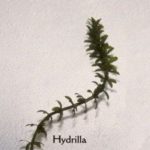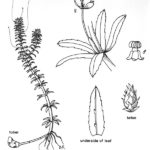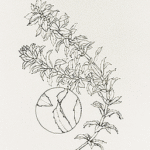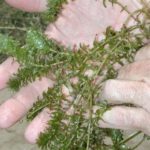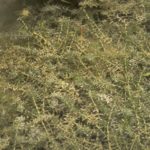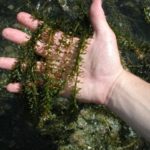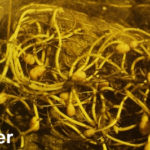Hydrilla verticillata
Non-Native
USDA, NRCS. 2018. The PLANTS Database (http://plants.usda.gov, 28 March 2018). National Plant Data Team, Greensboro, NC 27401-4901 USA.
Illustration courtesy of University of Florida/IFAS Center for Aquatic and Invasive Plants. Used with permission.
What is Hydrilla?
Physical Characteristics
Leaves:
Flowers:
Stem:
- Slender
- Branching
- Up to 25 feet long
Roots:
- Rooted in mud
- Potato-like tubers attached to roots
Hydrilla is often confused with the native Elodea or the non-native Egeria. Hydrilla has one or more teeth on the underside of the midrib, neither Elodea nor Egeria have these midrib teeth. The teeth make Hydrilla feel rough when drawn through your hand from base to tip. Flowers of Hydrilla are much smaller (1/4 inch in diameter) than Egeria.
Where Does it Grow?
EDDMapS. 2024. Early Detection & Distribution Mapping System. The University of Georgia – Center for Invasive Species and Ecosystem Health. Available online at http://www.eddmaps.org/; last accessed January 28, 2024.
Non-Native
Hydrilla is native to Europe and Asia and was probably brought to the U.S. for the aquarium industry.
Is it Invasive?
Hydrilla is considered a noxious pest because it grows so rapidly, out competing and eliminating native species, and forming surface mats that hinder recreation, navigation, and water intakes.
This is a non-native plant that should not be grown as it is invasive and illegal to possess or transport this species in Texas. Please report sightings to the Texas Parks and Wildlife Department at (512) 389-4800.
